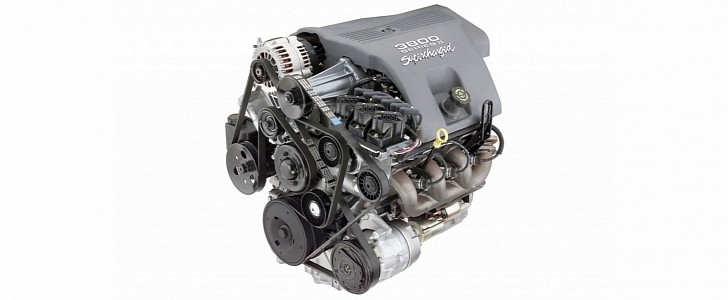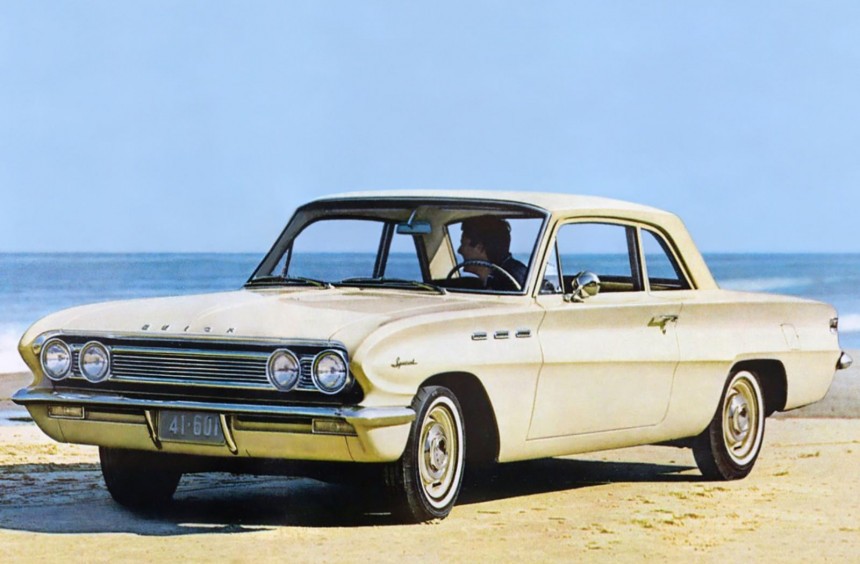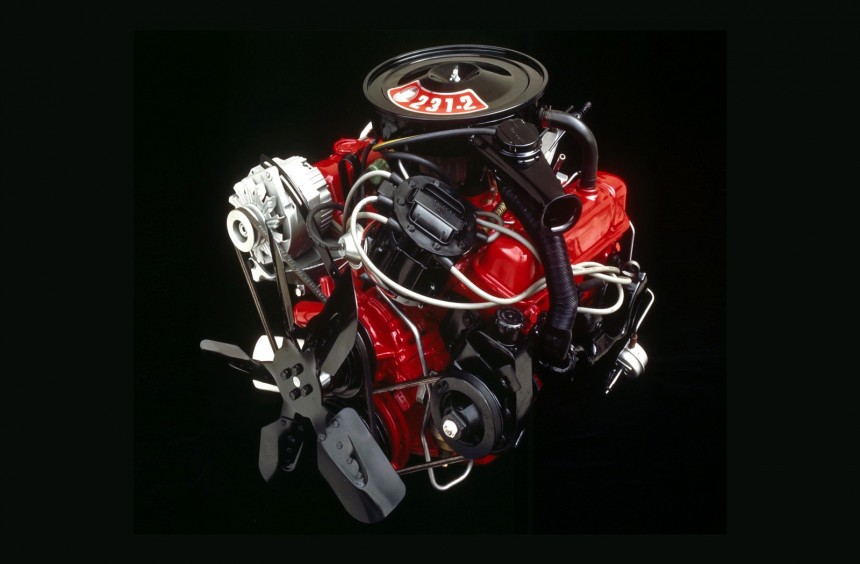While eight cylinders like Chevy’s small-block or Chrysler’s HEMI, are often associated with American engineering excellence, many enthusiasts forget about Buick’s venerable V6. Less exciting in terms of performance, it was produced in massive numbers, setting new standards when it came to reliability, fuel efficiency, or ease of maintenance, characteristics that made it one of the best, most successful powerplants ever built.
It all started in 1961 when GM introduced both a new all-aluminum, 215-ci (3.5-liter) V8 and an iron-block V6 for its Buick, Oldsmobile, and Pontiac compact cars. The latter was heavily based on the architecture of the aluminum, eight-cylinder, and even if the GM division dubbed it Fireball, it was actually quite the oddball.
The first V6 used on a mass-produced passenger car (Buick Special), the unit featured a 90-degree cylinder bank angle, irregular firing order and, no balance shaft. Instead, the large amounts of vibrations it produced were (inadequately) countered by soft engine mounts, which was a relatively cheap and uninspiring fix. Enthusiasts will say that its distinctive low rumble was worth it, while critics will just call it the perfect example of a rough idling motor.
Despite this, the 198-ci (3.2-liter) V6 proved reliable and adequately fuel-efficient, so Buick continued to develop it in the years that followed, while its eight-cylinder sibling was discontinued after just two years of service.
In 1964, the unit was enlarged to 225 ci (3.6 liters), but three years later, GM gave up on it, selling the rights and tooling for its development to Kaiser-Jeep. Because it was compact and provided adequate performance, the engine now renamed Dauntless 225 was a perfect fit for the CJ Jeep, a model it continued to power until 1971.
The early 1970s brought forth an oil crisis that hit the automotive industry hard. Looking to improve fuel efficiency for their vehicles, GM reacquired the rights to manufacture the V6 from American Motors (the new owners of the Kaiser-Jeep brand) in 1974.
A year later, a revised 231-ci (3.8-liter) was launched for the Buick Skyhawk, Skylark, Century, and Regal models. Due to fuel economy and emissions requirements, the engine produced just 110 hp, but this configuration would lay the foundation for much more powerful versions.
For the 1978 model year, GM began to market the 231 as the 3.8-liter since metric displacements became common in the U.S. With an updated crankshaft design, an even-firing ignition system, as well as a turbocharged version, the V6 was now a vastly improved, versatile engine. By 1981, the corporation was manufacturing more than a million units per year, and in addition to Buicks, the six-cylinder saw use in Cadillac, Oldsmobile, or Pontiac models.
Turbocharging hit its peak in 1987 when the limited production Buick GNX hit the streets. With an output of 276 hp on paper, or around 300 hp on the dyno, the all-black machine became legendary for holding its own against exotics like the Ferrari Testarossa.
The 3800 was officially born in 1988 when the six-cylinder got another major redesign. Dubbed LN3 or Pre-Series I by some enthusiasts, this 160-hp, naturally-aspirated version featured a balance shaft, on-center bore spacing, a 3x/18x crank-trigger system, and other technological improvements that made it better in every way.
In 1991, the LN3 was replaced by the L27 (or Series I) that was fitted with a better fuel injection system and could produce 170 hp in normally aspirated form. A 205-hp supercharged version also became available that year. It could make 205 hp in 1991, but this figure grew to 225 three years later, thanks to several upgrades.
Arguably the best, most popular iteration of Buick’s V6 entered production in 1995. Known as the 3800 Series II, it featured a vastly improved architecture that made it smoother, lighter, more compact, and far more reliable. The naturally-aspirated variant produced a healthy 205 hp, while the supercharged edition released one year later could make 240 hp.
The last version of Buick’s iconic engine was built between 2004 and 2008. It was equipped with stronger connecting rods, an aluminum upper plenum, or electronic throttle control, all of which made it even more reliable.
Even if the performance figures weren’t spectacular, the nearly flawless construction, beefy internals, ease of maintenance, and great fuel efficiency, make the 3800 - particularly in Series II and III guise – one of the best V6 engines ever built. Cheap, reasonably lightweight, compact, and highly tunable, it’s also a great choice for smaller, custom builds and swap projects for those that are on a tight budget.
The first V6 used on a mass-produced passenger car (Buick Special), the unit featured a 90-degree cylinder bank angle, irregular firing order and, no balance shaft. Instead, the large amounts of vibrations it produced were (inadequately) countered by soft engine mounts, which was a relatively cheap and uninspiring fix. Enthusiasts will say that its distinctive low rumble was worth it, while critics will just call it the perfect example of a rough idling motor.
Despite this, the 198-ci (3.2-liter) V6 proved reliable and adequately fuel-efficient, so Buick continued to develop it in the years that followed, while its eight-cylinder sibling was discontinued after just two years of service.
The early 1970s brought forth an oil crisis that hit the automotive industry hard. Looking to improve fuel efficiency for their vehicles, GM reacquired the rights to manufacture the V6 from American Motors (the new owners of the Kaiser-Jeep brand) in 1974.
A year later, a revised 231-ci (3.8-liter) was launched for the Buick Skyhawk, Skylark, Century, and Regal models. Due to fuel economy and emissions requirements, the engine produced just 110 hp, but this configuration would lay the foundation for much more powerful versions.
Turbocharging hit its peak in 1987 when the limited production Buick GNX hit the streets. With an output of 276 hp on paper, or around 300 hp on the dyno, the all-black machine became legendary for holding its own against exotics like the Ferrari Testarossa.
The 3800 was officially born in 1988 when the six-cylinder got another major redesign. Dubbed LN3 or Pre-Series I by some enthusiasts, this 160-hp, naturally-aspirated version featured a balance shaft, on-center bore spacing, a 3x/18x crank-trigger system, and other technological improvements that made it better in every way.
Arguably the best, most popular iteration of Buick’s V6 entered production in 1995. Known as the 3800 Series II, it featured a vastly improved architecture that made it smoother, lighter, more compact, and far more reliable. The naturally-aspirated variant produced a healthy 205 hp, while the supercharged edition released one year later could make 240 hp.
The last version of Buick’s iconic engine was built between 2004 and 2008. It was equipped with stronger connecting rods, an aluminum upper plenum, or electronic throttle control, all of which made it even more reliable.
Even if the performance figures weren’t spectacular, the nearly flawless construction, beefy internals, ease of maintenance, and great fuel efficiency, make the 3800 - particularly in Series II and III guise – one of the best V6 engines ever built. Cheap, reasonably lightweight, compact, and highly tunable, it’s also a great choice for smaller, custom builds and swap projects for those that are on a tight budget.
















